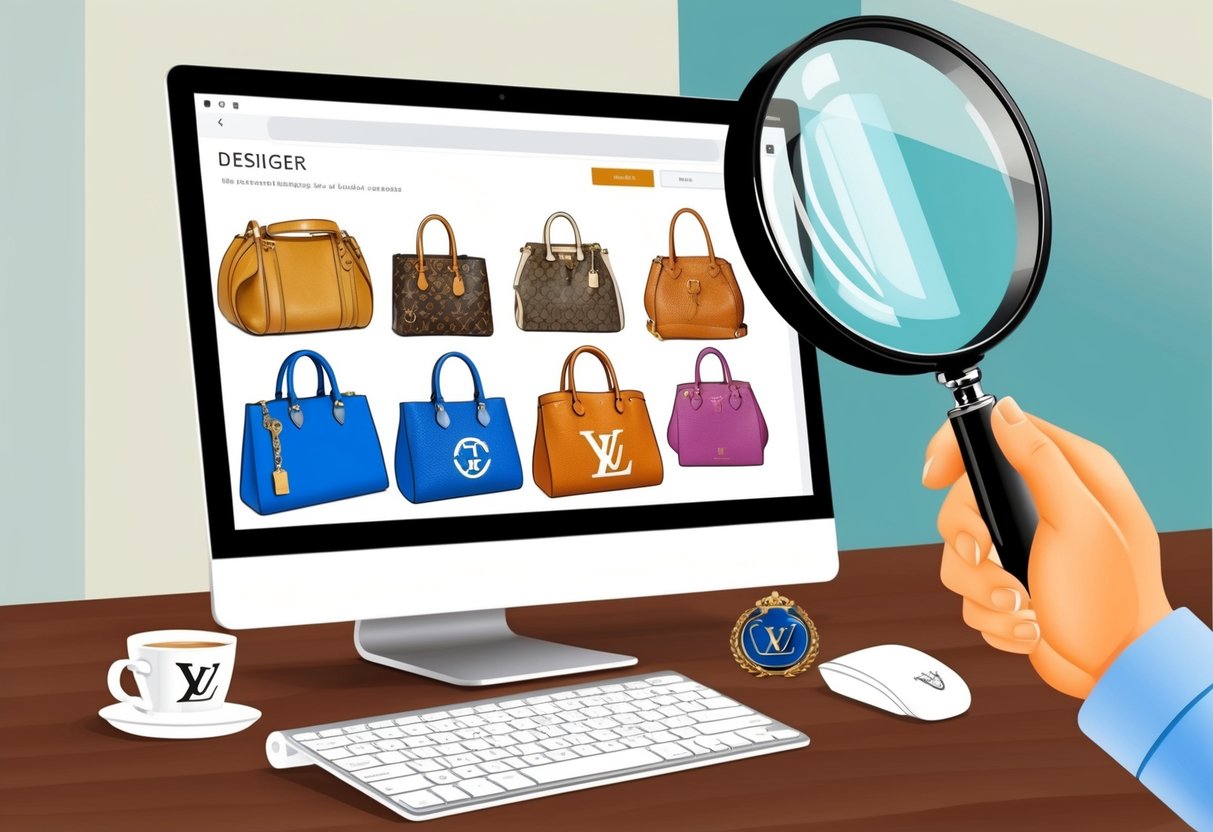
How to Research Sellers and Marketplaces
Knowing how to research the background and reputability of online sellers is essential for authentic designer brand purchases. Careful evaluation of sellers and marketplaces helps detect counterfeit risks and ensures a safer shopping experience.
Checking Seller Reputation
Assessing seller reputation is critical for online shopping, especially on platforms like Amazon and eBay. Always examine seller ratings and read feedback left by previous buyers, paying close attention to reviews mentioning authenticity, shipping, and customer service responsiveness.
Independent product reviews and community forums can reveal past issues with counterfeit goods or unsatisfactory returns. Look for established sellers: those with long histories and large volumes of positive feedback are more likely to be trustworthy.
Be cautious if the seller’s recent reviews mention fake or damaged goods. Consistency in ratings over time is a positive indicator.
Confirm if the seller participates in any authenticity guarantee programs or highlights official partnerships with product brands. Such transparency reduces the risk of counterfeit products.
Identifying Authorized Retailers
It is important to verify that a retailer is authorized to sell the designer brands they advertise. Many brands maintain lists of authorized retailers on their official websites.
Compare the seller’s information on Amazon or eBay with these lists before completing a purchase. Watch for suspiciously low prices, which often indicate the seller is not an authorized distributor.
Cross-reference the store location, contact details, and the look of the store’s website or product pages for irregularities. Be wary of vague or rapidly changing information.
Official shopping sites will provide clear, accessible company addresses and contact information. When possible, contact the brand’s customer support directly to confirm whether a seller is authorized.
Avoid making purchases from third-party sellers who cannot provide proof of authorization when asked.
Understanding Return Policies
Return policies can reveal much about a seller’s authenticity. Authentic sellers and authorized retailers typically have transparent, easy-to-understand return policies that clearly explain buyer options.
Policies should include details on item condition, time limits, and refund or exchange procedures. Be alert to strict or confusing return terms.
Counterfeit sellers may use complicated policies or refuse to accept returns altogether, making it hard to recover your money. Always review the policy in detail before buying, especially on marketplaces like eBay and Amazon where third-party sellers set their own rules.
Genuine retailers will not hesitate to provide customer support and answer questions about returns. If the seller is evasive or the policy seems unfair, consider shopping elsewhere.
Understanding the return process beforehand gives buyers an extra layer of protection against counterfeits.
Red Flags in Product Listings
Shoppers often encounter fake goods on online marketplaces, making it important to identify warning signs. Recognizing certain details in a listing can prevent falling victim to counterfeit items or counterfeit goods.
Unusually Low Prices
Significant price drops or “too good to be true” deals are frequent indicators of counterfeit items. Authentic designer brands rarely have steep discounts, especially on current or high-demand products.
Counterfeit goods are often listed at a fraction of the real price to attract quick sales from unsuspecting buyers. Buyers should compare prices across multiple reputable stores to check the average retail value.
If the listing price dramatically undercuts others, it’s a strong warning sign. Some fake goods may also show a high “original” price slashed down to an implausibly low amount.
Bargain hunting is natural, but when a deal seems unrealistic, the risk of buying counterfeit items is very high. For more on this, read about red flags for counterfeit products online.
Lack of Authenticity Certificates
Authentic luxury brands typically include certificates of authenticity, serial numbers, or other documentation. Genuine products feature matching paperwork and may come with registration cards or branded documentation.
A product listing that avoids mention of these details, or only offers vague statements like “guaranteed authentic” without evidence, is suspicious. Counterfeit goods sellers often skip including clear photos of paperwork, or provide documentation only upon request.
Look for listings with clear, close-up images of any tags, certificates, or serial numbers. Requesting authentic items’ paperwork should be straightforward — if a seller refuses or hesitates, buyers should reconsider the purchase.
This is one of the most reliable tests for detecting fake designer goods online.
Missing or Generic Packaging
Designer brands pay close attention to packaging, using high-quality boxes, branded tissue paper, dust bags, and unique wrapping. Authentic items arrive with packaging that features brand logos, specific colors, and proper labeling.
Counterfeit items may arrive in unbranded plain boxes, generic plastic bags, or packaging with minor spelling errors or poor printing. Sometimes, listings don’t show packaging at all, or only include generic stock images.
Examine the provided images and product description carefully. If they don’t display packaging specific to the brand, or if the seller avoids questions about it, the product could be a counterfeit good.
Packaging inconsistencies are a common giveaway, especially for handbags, shoes, and small leather goods.



